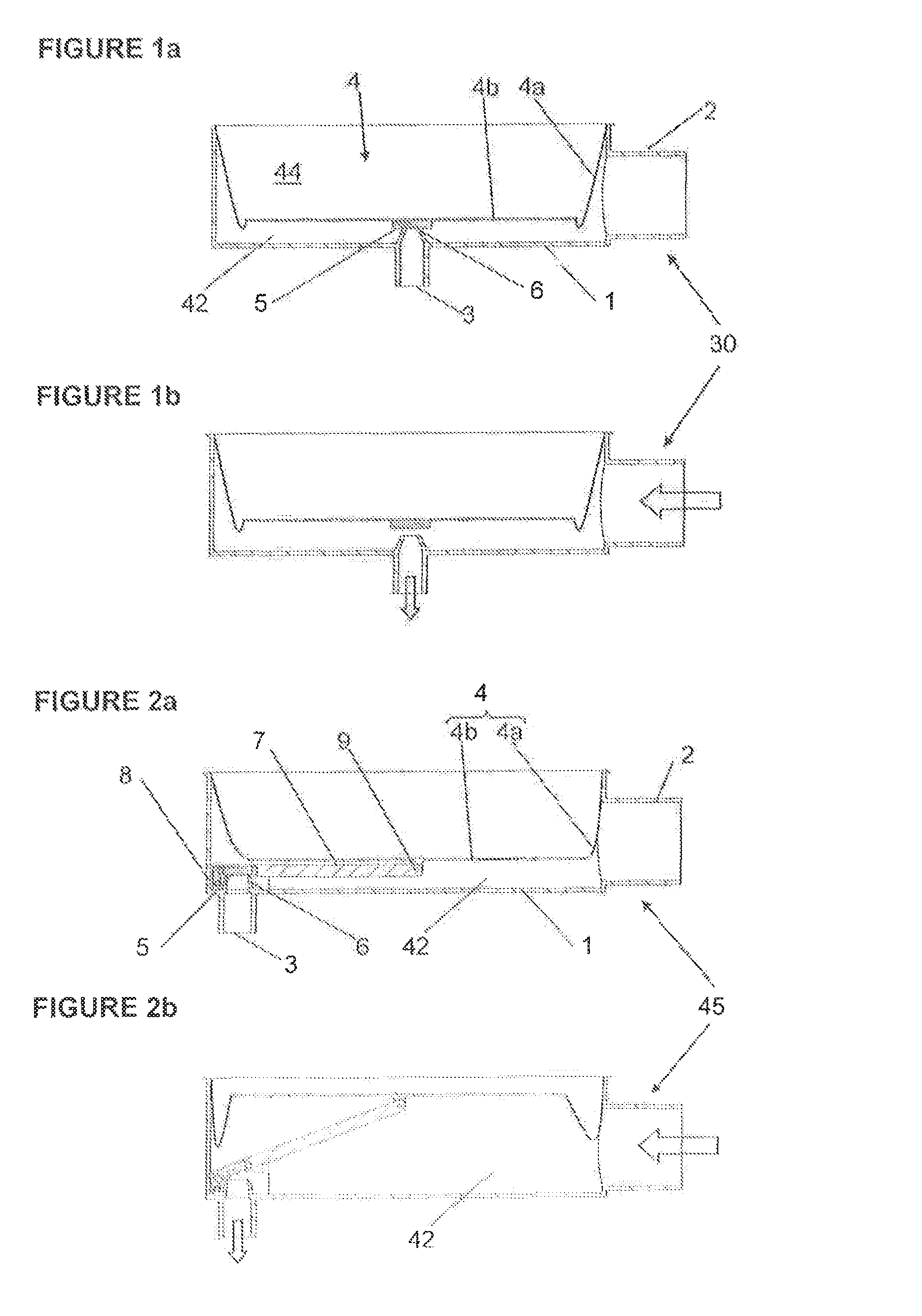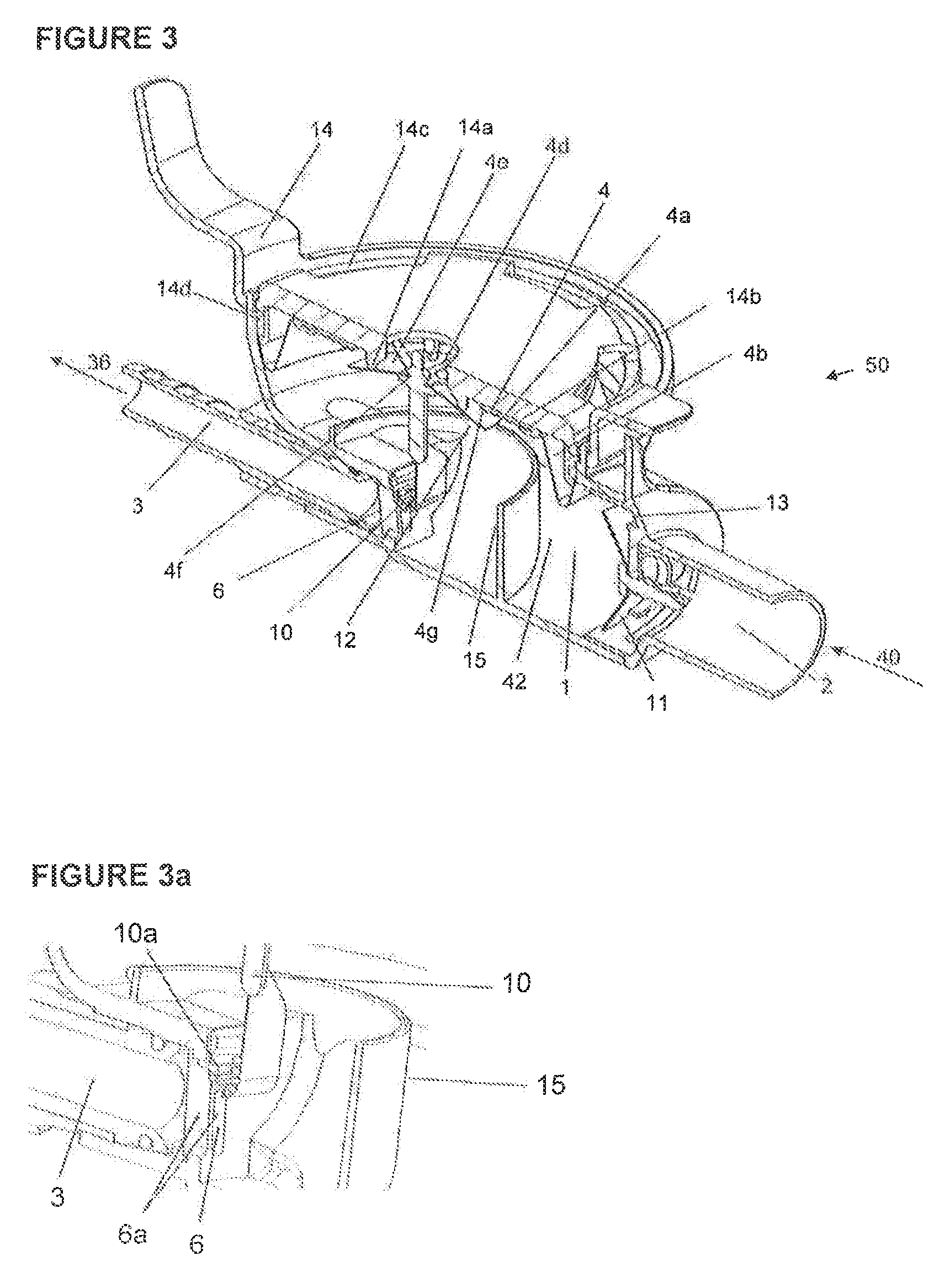Vacuum demand valve
a demand valve and vacuum technology, applied in the direction of valve operating means/release devices, instruments, process and machine control, etc., can solve the problems of inhalation of gas, potential health hazards, and undesirable inhalation of gas by clinicians in the area, so as to avoid significant resistance to exhalation
- Summary
- Abstract
- Description
- Claims
- Application Information
AI Technical Summary
Benefits of technology
Problems solved by technology
Method used
Image
Examples
Embodiment Construction
[0035]Referring to FIG. 8, a vacuum demand, or diaphragm, valve 30 is shown for use on the exhalation side of a breathing apparatus 32 for controlling the flow of exhalation gases from a patient 34 to a vacuum line 36. Known demand valves are connected to control the supply of compressed gas to a patient rather than to control the supply of exhaled gas to a vacuum.
[0036]A typical breathing apparatus may comprise a mask adapted to be placed over a nose and mouth of a patient for allowing a mixture of anaesthetic gases to be breathed in by a patient an exhaled along an exhalation line 40 to the demand valve 30. The vacuum line is connected to a source of vacuum, which is typically a hospital waste gas disposal system 38. Usually a hospital wall or ceiling has a vacuum port to which a vacuum line can be connected from the demand valve to the vacuum source the latter of which is located elsewhere in a hospital. In use of the arrangement shown in FIG. 8, a mixture of anaesthetic gases is...
PUM
 Login to View More
Login to View More Abstract
Description
Claims
Application Information
 Login to View More
Login to View More - R&D
- Intellectual Property
- Life Sciences
- Materials
- Tech Scout
- Unparalleled Data Quality
- Higher Quality Content
- 60% Fewer Hallucinations
Browse by: Latest US Patents, China's latest patents, Technical Efficacy Thesaurus, Application Domain, Technology Topic, Popular Technical Reports.
© 2025 PatSnap. All rights reserved.Legal|Privacy policy|Modern Slavery Act Transparency Statement|Sitemap|About US| Contact US: help@patsnap.com



